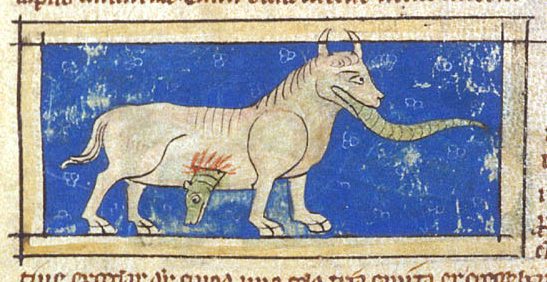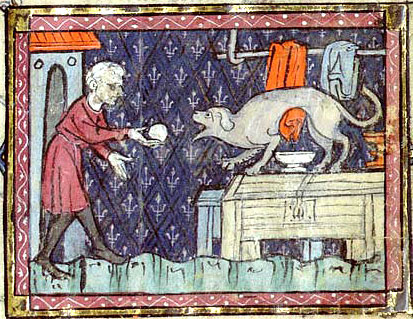Quirky History: Fantastical Beasts in Medieval Bestiaries
The fictional universe of J.K. Rowling is filled with fantastical creatures, and no other movie takes better advantage of this than Fantastical Beasts and Where to Find Them, which opens in theaters today.
When creating her magical world, Rowling is tapping into a literary tradition that goes all the way back to the Middle Ages and the literary genre of the bestiary.
Bestiaries are books of animals, both real and fantastical, accompanied by a description and a Christian parable. Even though bestiaries peaked in popularity in the 13th century, they continue to influence us today. Especially when it comes to fantasy fiction.

The Stag
According to the bestiaries, the stag represents the ultimate good and the loyal friend. The stag is the vanquisher of evil. No wonder then that J.K. Rowling chose the stag as Harry's patronus.

The Lion
According to C.S. Lewis, the lion Aslan in The Chronicles of Narnia is meant to represent Jesus Christ. If we turn to the bestiaries we find what could possibly have been Lewis’ inspiration for making Aslan a lion, and not some other kind of animal. The bestiaries tell us that the lion represents the Resurrection, a theme closely connected to Aslan’s role in Narnia.

The Dragon
There are so many books, movies, games, and comic books that feature dragons it’s impossible to mention them all. There is, of course, J.R.R. Tolkien’s Smaug in The Hobbit, Drogon, Viserion, and Rhaegal in Game of Thrones, and Robin Hobb’s Rain Wild Trilogy. Dragons, too, are featured in the bestiaries. Here, they represent the devil. In a bestiary it’s possible to determine how evil a dragon is based on its appearance. To emphasize the dragon’s demonic nature horns and bat-like wings could be added. A looped tail represents the Apocalypse when the Antichrist will ensnare the greatest minds of the Church.

The Leucrota
Continuing on the theme of evil, in the bestiaries we find the hybrid animal the leucrota, which is a cross between a hyena and a lioness. Despite having these two animals as its parents, the leucrota is described as a skittish horse-like creature. The most distinguishing feature of a leucrota is its mouth that reaches from one ear to the other and which has only one large tooth. Like the hyena, the leucrota imitates human speech. In fantasy fiction, the leucrota has inspired the Devil Horses in Myke Cole’s Shadow Ops series. The Devil Horses move in large unpredictable herds. They also imitate human speech in a particularly eerie way. It is difficult to determine if they are doing it out of curiosity or because they are mocking.
Thank you to Christine Ekholst, Sara Ellis Nilsson, and Myke Cole.




